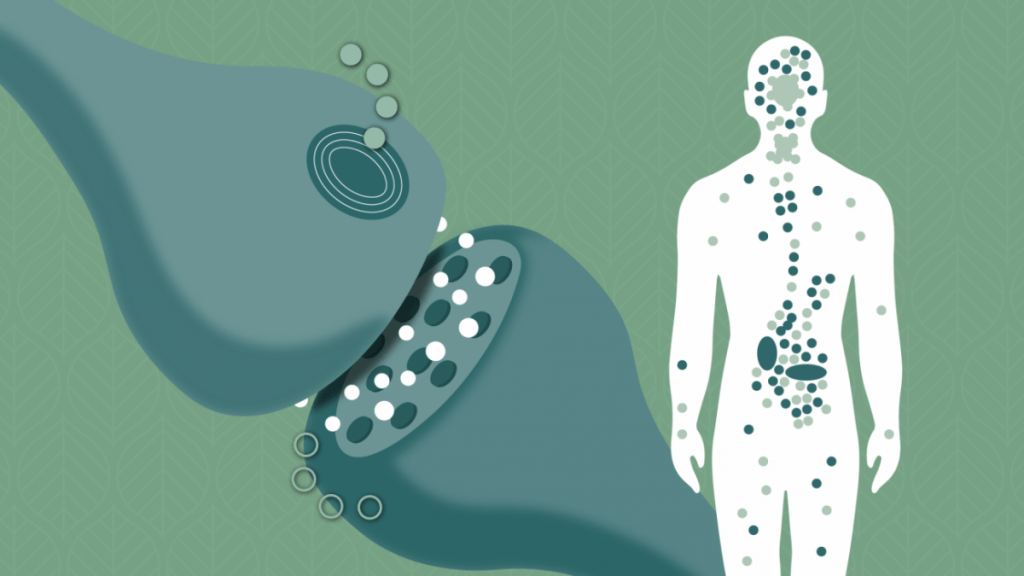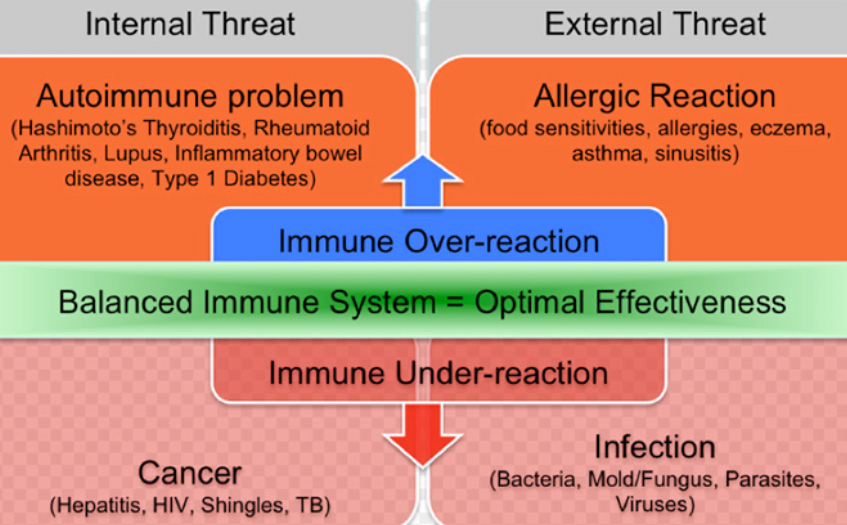English

Many of us know how important balance is in our daily lives. Work-life balance is a crucial factor in our physical and mental health. Nutritionists have shown that a balance between omega-6 fatty acids (which are generally, but not always, pro-inflammatory and therefore considered the “bad guys”) and omega-3 fatty acids (the “good guys”) can have a variety of health effects. For example, replacing omega-6 rich processed foods (e.g. chips, potato crisps and pastries) with omega-3 rich healthy alternatives (e.g. salmon steak, sardines and fresh leafy vegetables) improves cardiovascular, brain and metabolic health. A similar analogy can be used when talking about endocannabinoids and the endocannabinoid balance.
What is the endocannabinoid system?
The endocannabinoid system consists of a group of specialised lipids, their receptors and the enzymes that produce and break them down. Endocannabinoids are known to modulate and influence a variety of physiological systems through direct and indirect effects, including appetite, pain, inflammation, thermoregulation, intraocular pressure, sensation, muscle control, energy balance, metabolism, sleep health, stress responses, motivation/reward, mood and memory.
What are cannabinoid receptors?
Cannabinoid receptors are an important class of cell membrane receptors, also known as serpentine. Receptors are something like “locks”, and the ligand compounds that bind to them are something like “keys” in a key system. They have about seven sections that pass through the outer cell membrane. Cannabinoid receptors are also coupled to G-proteins, with much of the “magic” of signal transduction taking place when a molecule or compound binds to the outer part of these receptors. The three main ligands that bind to cannabinoid receptors are all lipophilic (fatty or “fat-loving” compounds) and include endocannabinoids (synthesised in the body), phytocannabinoids (plant substances, e.g. from cannabis) and synthetic cannabinoids.
The cannabinoid receptors are further divided into two main subtypes known as CB1 and CB2. Although they share some similarity, they are mainly distinguished by which tissue or organ system they are associated with in the body. CB1 is found mainly in the brain, but also in the lungs, kidney, liver, fat, heart, muscle and bone. CB1 receptors are mainly associated with the psychoactive and euphoric aspects of THC. CB2 receptors, on the other hand, are mainly found in the immune system and blood cells, and in lower density also in the nervous system, liver, intestines, muscles and bones.
How do cannabinoid receptors contribute to the balance of the endocannabinoid system?
Endocannabinoid tone/balance is the relative contribution of CB1 versus CB2 activity at a given time. Research is accumulating that shows CB1 dominance is associated with increased perception of stress, anxiety and paranoia, increased appetite and reduced nausea/vomiting and pain, as well as improved immune surveillance, the latter of which has been demonstrated in certain cancer models. In contrast, CB2 dominance is associated with a reduction in inflammation and tissue damage, in conjunction with improvements in metabolic health, insulin signalling and sensitivity, satiety and energy balance.
Based on this information, some scientists are focusing on specific CB1 blockers that may improve many of the symptoms of metabolic syndrome. Metabolic syndrome is a cluster of risk factors that increase the risk of heart disease, stroke and diabetes. In particular, these include elevated blood pressure, high blood sugar, excess body fat around the waist and abnormal cholesterol levels. Some research in this area has already shown that peripheral CB1 inhibition lowers blood pressure and blood sugar and improves cholesterol levels, as well as leading to the breakdown of visceral fat, which reduces the risk of cardiovascular disease and type II diabetes.
What does a balanced endocannabinoid system look like?
Recent biochemical and behavioural findings show that “optimal” activation of CB1 receptors in rodents produces antidepressant-like neurochemical changes and behavioural effects consistent with an antidepressant/antistressant effect. These findings underscore the importance of a balanced endocannabinoid system.
It is known that the endocannabinoid system controls the proliferation, differentiation, survival and immunocompetence of the often neglected organ system of the skin (i.e. skin cells and hair). Targeting the endocannabinoid balance to normalise unwanted skin cell growth and skin inflammation could prove useful in a number of human skin diseases (psoriasis, eczema, acne, dermatitis, systemic sclerosis, etc.).
Our first example of drawing comparisons between the essential polyunsaturated fatty acid (PUFA) omega-6:omega-3 balance and CB1: CB2 endocannabinoid tone is even more appropriate, as dietary PUFA intake has been shown to influence levels of anandamide and 2-AG (the two main endocannabinoids in humans). Therefore, the balance of omega-6 and omega-3 PUFA is an important influencing factor in the activation and suppression of cannabinoid signalling in cells.
To illustrate this point, Hutchins-Weise et al. published the results of a rodent model of atrophy during immobilisation and wear and tear in combination with fish oil supplementation. The increased omega-3 content from fish oil consumption resulted in significant changes in the endocannabinoid system of the mice (increased CB2 receptors but decreased 2-AG and CB1 activity) by sensitising the muscle to counteract the effects of immobilisation and hind leg suspension.
What happens when the endocannabinoid system becomes imbalanced?
Remember that “balance” is key, as research has shown that too much focus on CB1 inhibition can lead to a decline in fertility and an increased risk of depression, mood swings and immune suppression. Excessive CB1 signalling has been linked to increased psychoactivity, systemic inflammation, cardiovascular risk, diabetes and obesity. In contrast, excessive activation and dominance of CB2 could lead to decreased immune function and wound healing.
Related articles :
Published by Sakul
12/02/2023choose and buy cannabis seeds from our offer
our pleasure

























